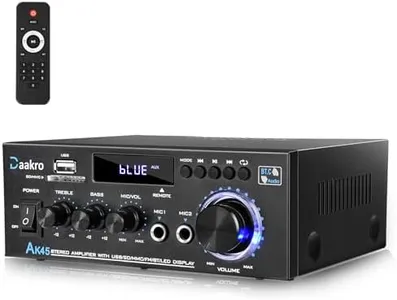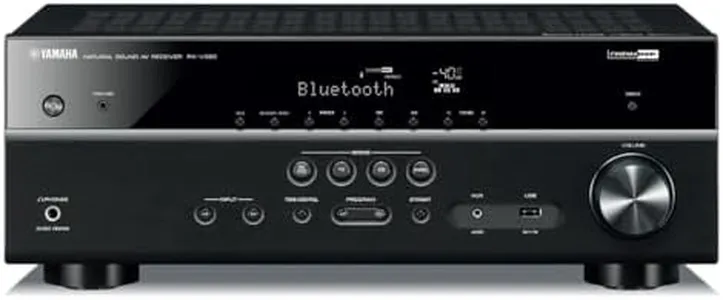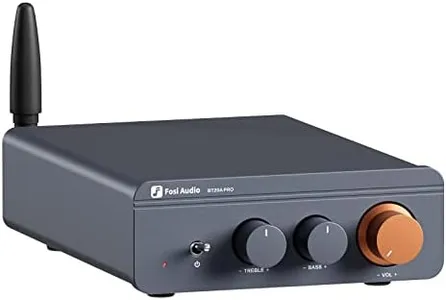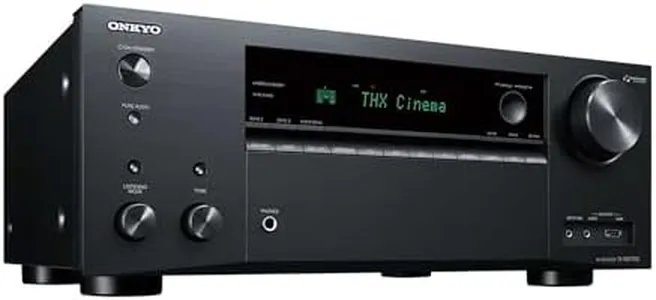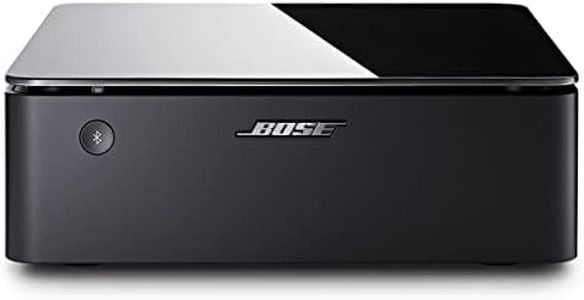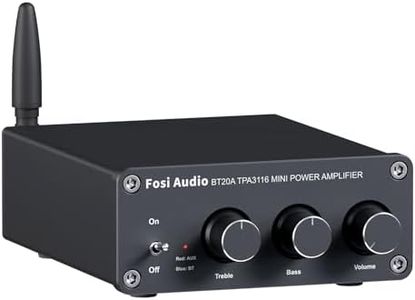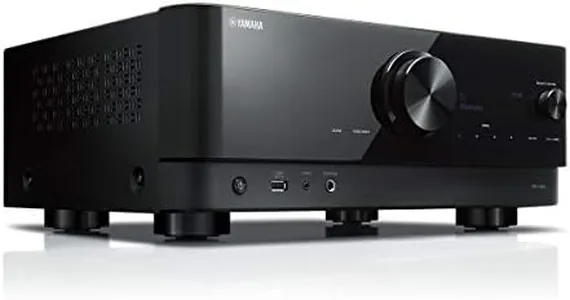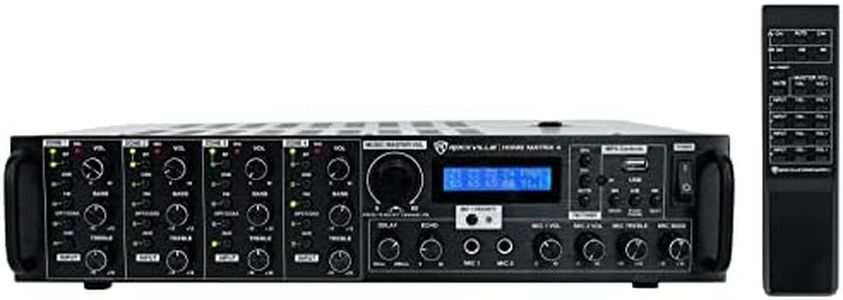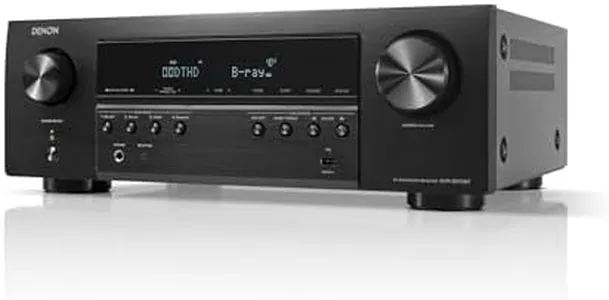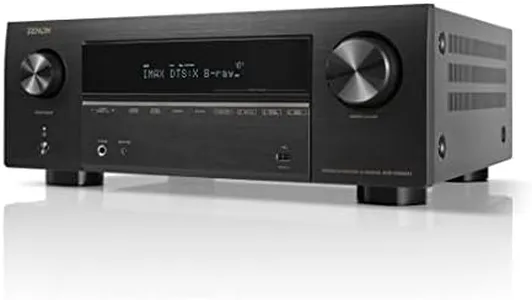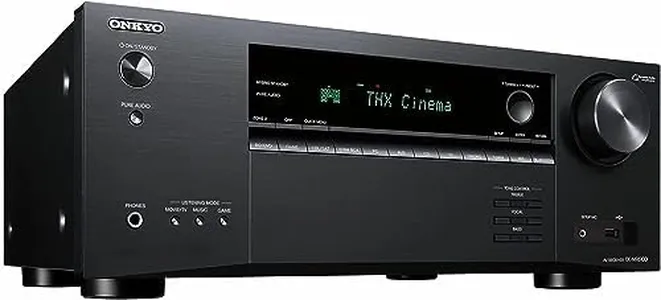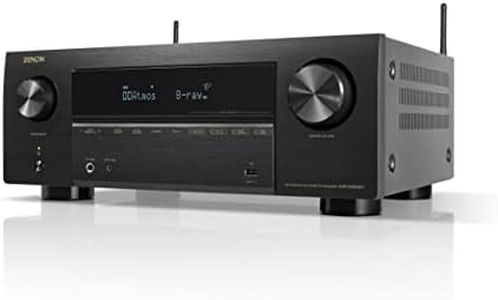10 Best Audio Amplifiers 2025 in the United States
Our technology thoroughly searches through the online shopping world, reviewing hundreds of sites. We then process and analyze this information, updating in real-time to bring you the latest top-rated products. This way, you always get the best and most current options available.

Our Top Picks
Sony STRDH190 2-ch Home Stereo Receiver with Phono Inputs & Bluetooth Black
Most important from
9427 reviews
The Sony STRDH190 2-ch Home Stereo Receiver is a solid choice for anyone looking to enhance their home audio setup. It offers 100 watts per channel, which is adequate for most home environments, and it supports a speaker impedance range of 6-16 ohms, making it compatible with a wide variety of speakers.
The receiver includes diverse inputs and outputs, including a phono input, 4 stereo RCA inputs, a 3.5mm input, and a stereo RCA output, making it versatile for connecting different devices. Bluetooth connectivity is a significant plus, allowing wireless streaming from smartphones and other Bluetooth-enabled devices. The build quality and design are practical, with a low-profile form factor that fits easily into typical AV cabinets. Additionally, it includes A/B speaker switching, enabling you to play music in different zones.
The included FM radio with 30 presets and a full-size headphone jack add extra convenience. However, at 17.1 pounds, it is relatively heavy, which may be a drawback for some users. With features like a large capacity power transformer aimed at superior sound quality and comprehensive connectivity options, this amplifier is well-suited for home audio enthusiasts who value versatility and ease of use.
Most important from
9427 reviews
YAMAHA RX-V385 5.1-Channel 4K Ultra HD AV Receiver with Bluetooth
Most important from
3035 reviews
The YAMAHA RX-V385 is a 5.1 channel audio amplifier designed for home theatre enthusiasts looking for a powerful and immersive surround sound experience. One of its strengths is its 100W power output per channel at 1kHz, which makes it capable of delivering robust and clear audio. The Total Harmonic Distortion (THD) is fairly low at 0.09% for 70W output, ensuring minimal distortion and high-quality sound. Its impedance handling of 8 ohms is standard, making it compatible with most home speakers.
The RX-V385 comes with 4 HDMI inputs and 1 output, supporting 4K/60 Ultra HD, HDR10, Dolby Vision, and more, ensuring excellent video quality alongside audio. Its Bluetooth connectivity allows for wireless streaming from devices, adding modern convenience. Build quality is robust, with a well-designed, user-friendly interface. However, it could be considered bulky, weighing 16.3 pounds and measuring 12.4 x 17.13 x 6.34 inches, which may be a drawback for those with space constraints.
The automatic room calibration technology (YPAO) is a notable feature, adjusting sound settings based on the room's acoustics for optimal performance. The max output power at 145W with a high THD of 10% is less practical. This amplifier is a suitable choice for users seeking a balance of strong performance, modern features, and reliable brand reputation in their home audio setup.
Most important from
3035 reviews
Buying Guide for the Best Audio Amplifiers
Choosing the right audio amplifier can significantly enhance your listening experience, whether you're setting up a home theater, a stereo system, or a professional audio setup. The key to finding the best amplifier for your needs is understanding the various specifications and how they impact performance. By considering your specific requirements and preferences, you can make an informed decision that will provide you with the best sound quality and functionality.FAQ
Most Popular Categories Right Now
